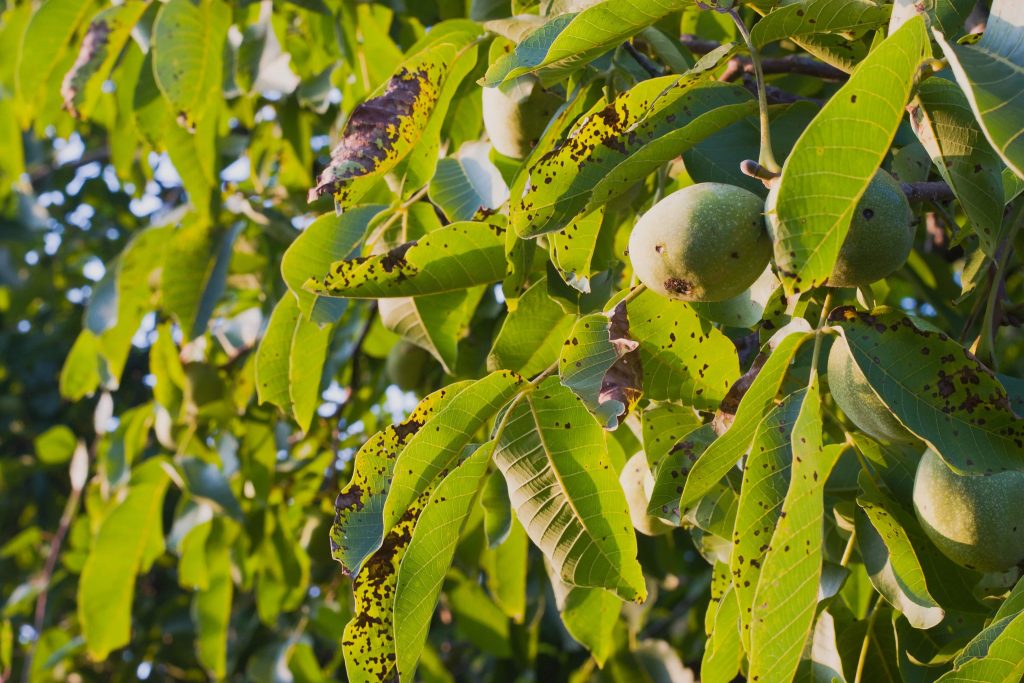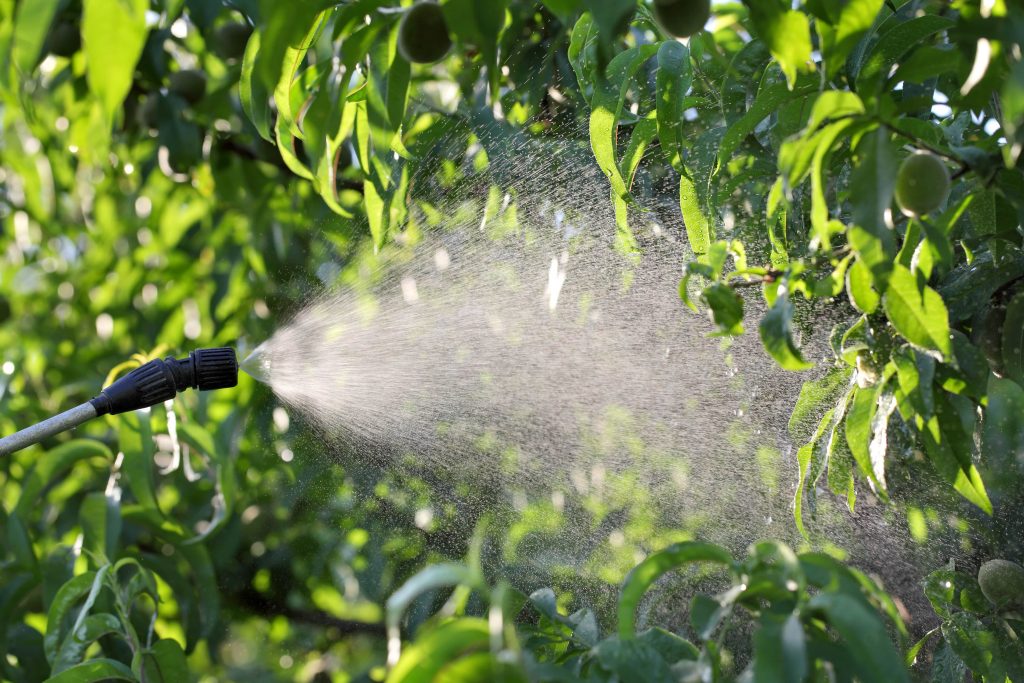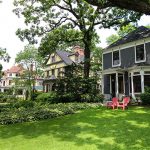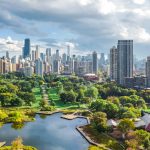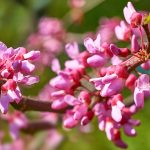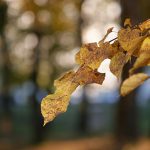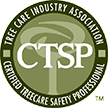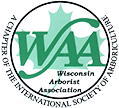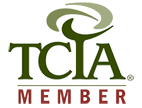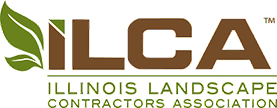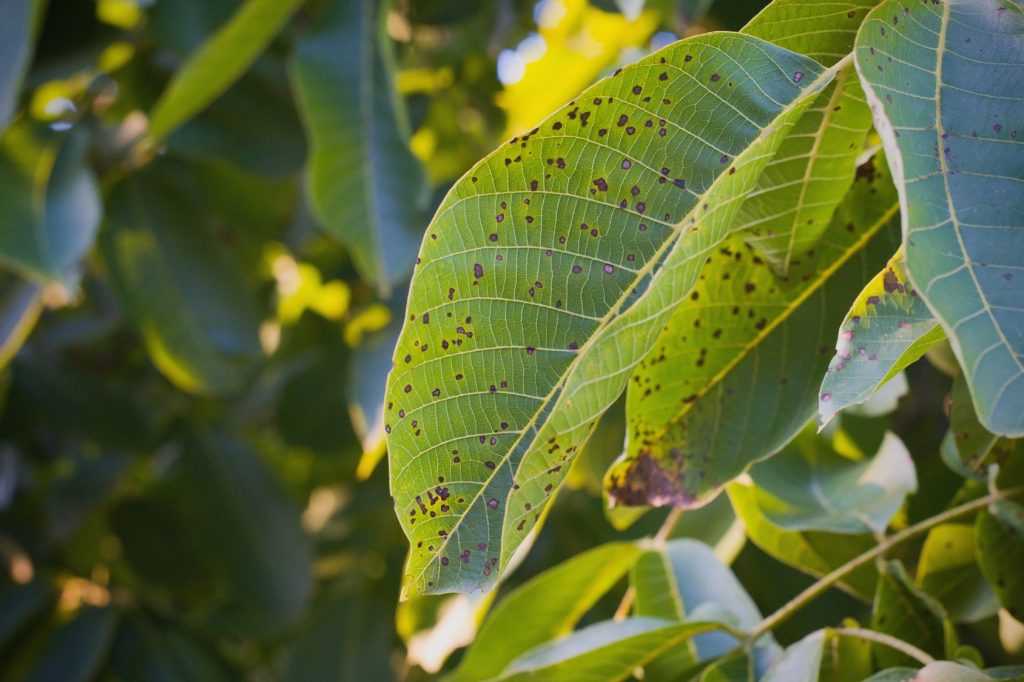
The fungal tree disease anthracnose can be a pesky, but usually not fatal, tree disease that can affect your Chicagoland, IL trees
This week, we return with our series on the common tree diseases and insect pests in Illinois with a discussion of a fungal diseases that can affect many different trees and shrubs; anthracnose. Anthracnose is a term used to describe a variety of similar fungal diseases that cause lesions to appear on the leaves, branches, and fruit of affected trees. These lesions typically appear as wet, dark spots on leaves and twigs and they can cause defoliation and eventually branch dieback. Affected trees may also develop cankers, or sunken areas of dead tissues. While anthracnose can cause damage to affected leaves and branches, it is rarely fatal to the tree.
Anthracnose is typically caused by fungi of the Colletotrichum or Gloeosporium genus, though there are many other genus groups of fungi that can cause this disease, and it tends to occur in warm, moist conditions. Many types of trees, especially shade trees such as maples, oaks, ash trees, and sycamores are vulnerable to anthracnose. A new form of anthracnose known as dogwood anthracnose was discovered in the late 1970s in the Pacific Northwest. This disease can thrive in cool conditions and it mainly attacks dogwood trees. In 1991, the fungus Discula destructiva was found to be the culprit. No matter what type of fungus has caused the disease, it is important to take action to prevent it from spreading and damaging more of the branches and leaves.
In this guide, we will cover the lifecycle of anthracnose disease, the symptoms that appear on your trees, and the best ways to prevent and treat trees and shrubs affected by the disease. At Hendricksen Tree Care, our arborists can diagnose and effectively treat trees affected by anthracnose with our tree care and maintenance services. We can use fungicides to treat the affected areas of your trees and remove affected branches with tree trimming. If you see signs of anthracnose on your trees, make sure you contact Hendricksen Tree Care right away so our arborists can diagnose and begin treating your trees.
Life Cycle of Anthracnose
The various fungi that cause anthracnose overwinter within infected twigs or dead leaves on deciduous trees. When the spring arrives, the fungi produce spores that spread to new growth through rainwater or sprinkler water. The spores will find new leaves and twigs and begin to germinate on the new growth. The infected leaves and twigs may experience another generation of germinating spores if moist conditions persist. The spread and effects of the fungi often slow and become negligible when the hot, dry conditions of summer arrive.
Which Trees are Vulnerable?
Anthracnose can affect the leaves, twigs, flowers, and fruit of a range of different deciduous and evergreen trees and shrubs. Some of the most vulnerable tree species include the Modesto ash, Chinese elm evergreen, maples, dogwoods including the Chinese dogwood and other flowering dogwood species, white oak trees, and sycamore trees including the American sycamore, California sycamore, and London plane. Anthracnose generally attacks the leaves and twigs of most deciduous trees but has also been known to attack flowers and fruits.
In most cases, anthracnose will not be fatal. Mature leaves and twigs are quite resistant to anthracnose and infected branches and leaves can be removed to prevent its spread. Hot, dry conditions that arrive in the middle of the summer can also slow the disease. However, anthracnose is unsightly, and it can spread to cause considerable damage to your trees if you do not take immediate action.
Anthracnose Disease Transmission
As mentioned above, fungi that cause anthracnose are transmitted through water, including rainwater and sprinkler water. The fungi germinate when they find new twigs and leaves and persistent rain and moist conditions can cause the fungi to spread to new areas of the tree.
Signs of Anthracnose Disease
The signs of anthracnose tend to vary depending on the type of tree affected and the weather conditions. Anthracnose is much worse in moist or humid conditions while hot and dry conditions can effectively stop the disease. It is important to look for these symptoms, especially in the spring, to tell if your trees are affected by anthracnose. Taking immediate action after discovering these symptoms will help prevent serious damage to your trees.
- Spots on leaves: The most common sign of anthracnose is the spots that appear on new leaves. These spots are irregularly shaped and are tan, brown, or black in color. In some trees, these spots appear all over the leaves and on others they may appear along the leaf veins. Affected leaves may become wilted and fall prematurely. Trees that are heavily affected may become defoliated.
- Spots on fruit: Just like with the leaves, the fruit on affected trees can also develop dark spots. These spots are dark, sunken spots usually with pinkish spore masses in the center. Fruits that are affected will become thoroughly rotted.
- Cankers: If the fungi that cause anthracnose get into the twigs and branches, it can cause cankers to develop on the branches and trunk. Cankers are sunken areas of dead tissue that can sometimes cause girdling, or damage to the tissues responsible for spreading nutrients and water. This can result in branch dieback.
- Distorted branches: When branches are damaged or killed by anthracnose, branches that regrow will likely grow in crooked. This affects the look of the tree and can result in further damage to the branches.
Anthracnose Treatment
While anthracnose is unsightly and it can cause significant damage to your tree, you can save your tree with effective treatment. Removing branches that are affected by anthracnose can help protect the rest of your tree and certain fungicides can also help. If your trees need fungicide treatment, it is usually best to have a professional arborist administer these applications.
The following tips will help you treat your affected trees:
- Prune affected branches and make sure these branches are removed and disposed of to prevent the spores from spreading. A professional arborist can provide safe and effective tree trimming.
- When affected leaves fall off the tree, gather them and make sure they are disposed of or destroyed.
- Treat your trees with a copper-based fungicide in the spring. You must be careful with these fungicides because they can be toxic in the soil. You should consult an arborist before using these fungicides.
You can prevent anthracnose from occurring in the first place with these tips:
- Make sure the soil around your trees is well-drained
- Plant tree species that are resistant to anthracnose
- Use a drip sprinkler to water your trees
- Make sure fruits do not touch the soil when ripe
Tree Care and Maintenance from Hendricksen Tree Care
The spring season in the Chicago area tends to be quite wet with rainfall and humid conditions which can put your trees at risk of anthracnose. Make sure you routinely check your trees for signs of the disease and work with a professional arborist to provide preventative treatments as well as treatments and pruning for affected trees.
Our arborists at Hendricksen Tree Care have the expertise and experience to diagnose problems with your trees like anthracnose and ensure that they get the necessary treatments. We will also discuss preventative measures with you that can include tree fertilization services, pruning, and fungicidal applications to help prevent anthracnose. Hendricksen Tree Care provides complete tree care and maintenance services for homes and businesses in Arlington Heights, Park Ridge, Mount Prospect, Northbrook, Palatine, Lake Zurich, Vernon Hills, Highland Park, and the surrounding north and northwest Chicago suburbs.
Stay tuned for our next installment in our common tree diseases and insect pests in the Chicago area series.
